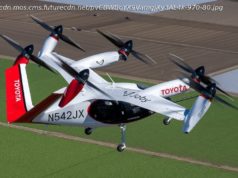We compare the different types of drawing tablets
For digital creatives, pen tablet vs. pen display vs. tablet is a tricky question that involves weighing up multiple factors. How large a drawing surface do you need? Are you going to be drawing on the go, or exclusively at your desk? Do you want a tablet that’ll be suited to other creative tasks like video editing or photo retouching? And, of course – how much do you have to spend?
While the drawing tablet market is a big, messy place, it can be divided into three broad categories – pen tablets (or graphics tablets), pen displays, and regular tablets. It’s these we’re looking at in this guide to help you figure out which is the right one for you.
We’ve given each type its own section, with an explanation of what it is and recommendations for the type of user it’s best suited for, based on our tests and reviews. For more choices, see our guide to the best drawing tablets.Graphics tablet / pen tablet
A pen tablet, or graphics tablet, when you get down to it, is a pretty simple thing. It’s a pressure-sensitive flat pad that comes bundled with a stylus. Connect it to a computer, and it can track the movements of the stylus and translate them into lines on the display. Graphics tablets are widely supported by many different types of software, and can be tremendously useful for a huge range of creative tasks, from simple line drawing to complex 3D modeling.
A good graphics tablet will have just the right amount of “bite” – meaning resistance between the stylus tip and the surface – giving it a pencil-and-paper feel. All the same, many people feel an understandable disconnect when they first try using one – which makes sense, as they’re drawing in one place and seeing the results appear in another. However, once you allow yourself to get used to it, the experience is pretty intuitive, and the fact that your drawing surface is kept separate from your screen furniture helps prevent the cramped feeling that can result from drawing on an iPad or pen display.
There’s also something worth saying about the humble graphics tablet that often gets left out of all the discussion of pressure sensitivity, lines per inch and the rest, and that is that a good graphics tablet will be one of the most long-lasting pieces of tech you’ll ever buy. Get one that’s decent quality, from the likes of Wacom or XP-Pen, and it will just keep on trucking – which also means you can be a little braver than you might usually be about buying one second-hand.
Graphics tablets are the cheapest option for creatives, with even the most expensive ones generally being more affordable than pen displays or the best tablets. Of course, you do need to factor in some form of external display – a computer with a high-resolution monitor is best, though a laptop will work fine; even a smartphone will do, as long as you have a suitable drawing app. This multi-device setup is cumbersome though, and makes you more desk-bound.






